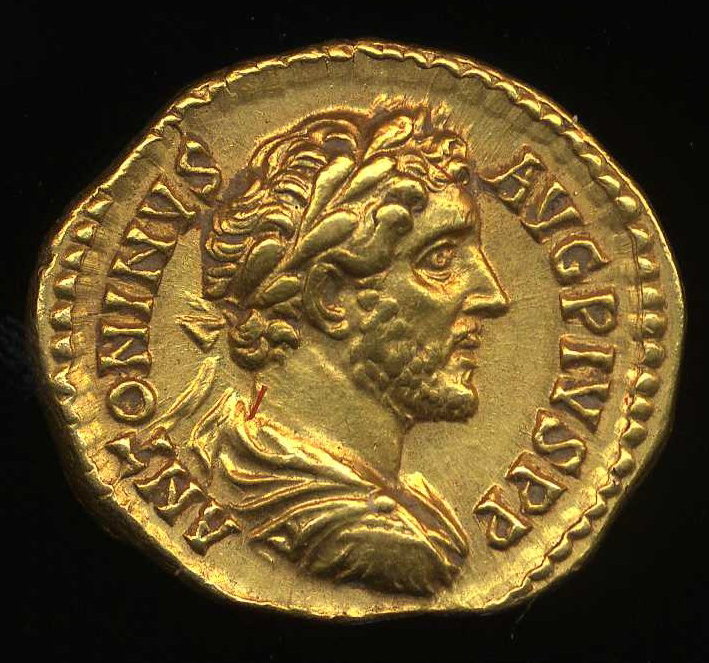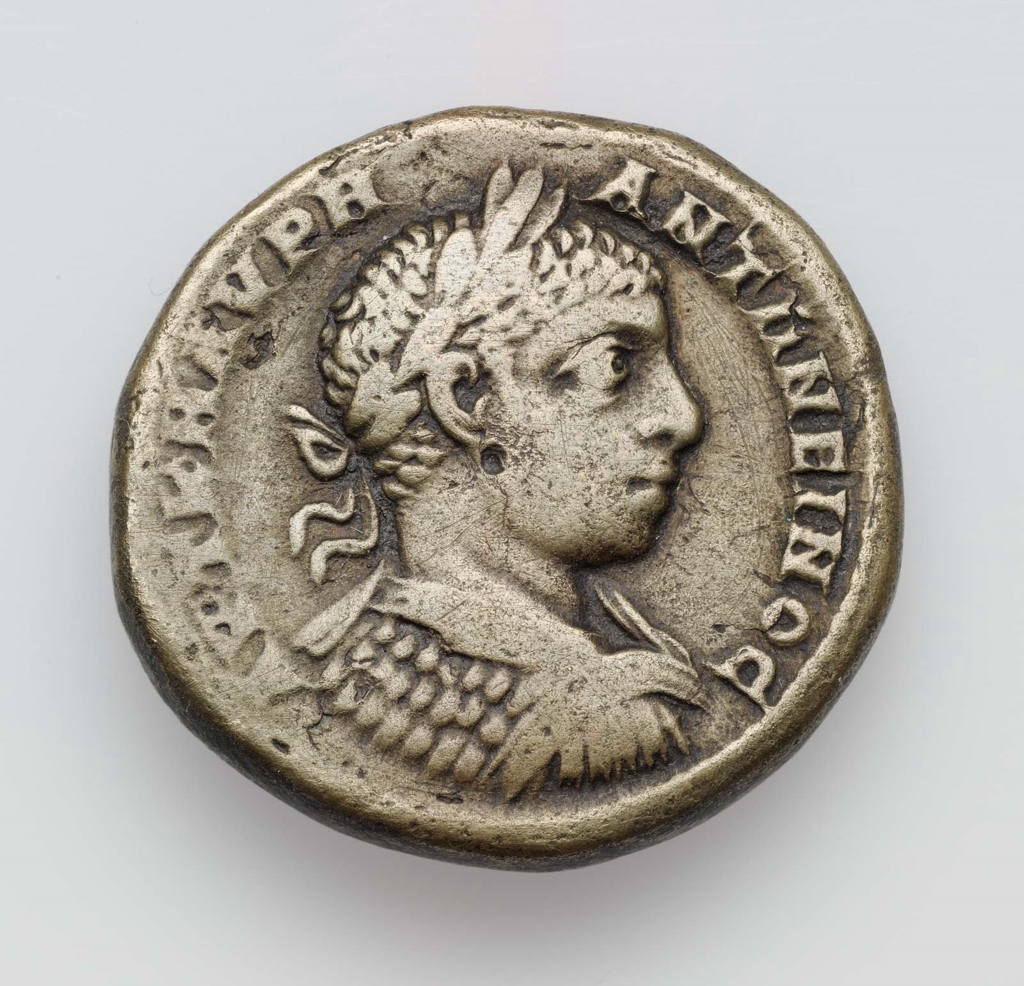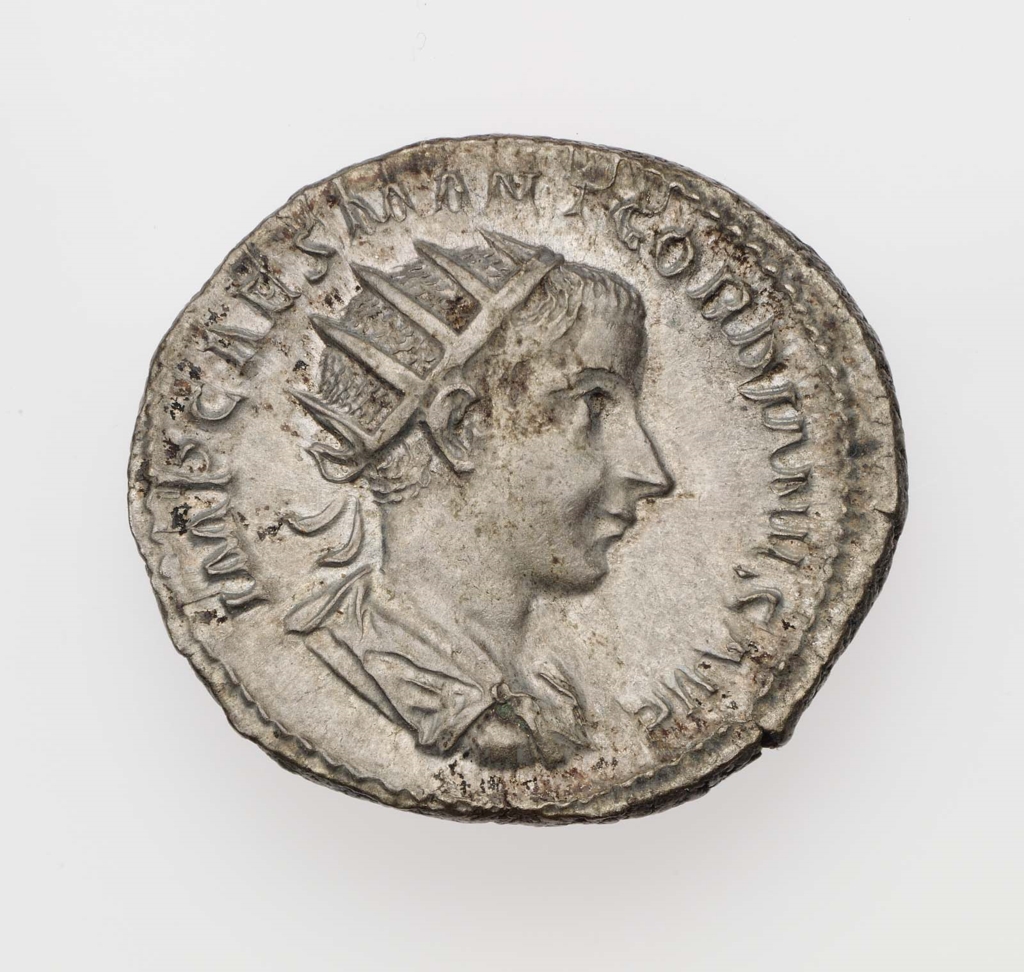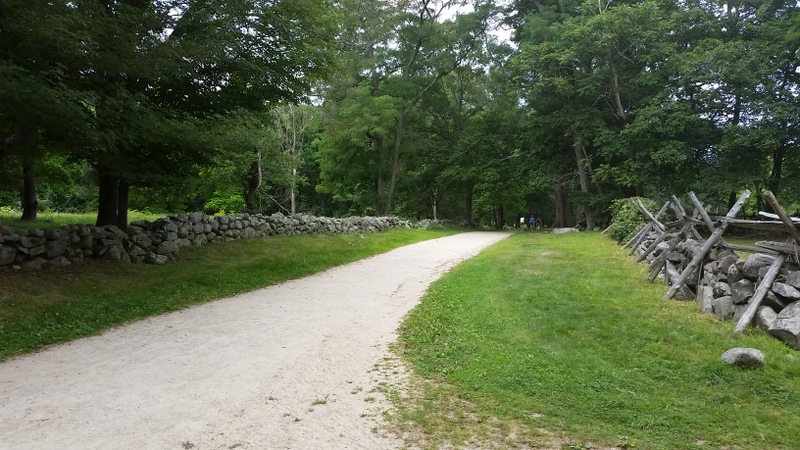In the last issue, I said that I was reading Rostovtzeff’s Social and Economic History of the Roman Empire, and finding it dull. As the book proceeds, however, it becomes somewhat more interesting. I feel that I’ve learned something from it, I’m almost glad I read it. In the last few chapters of the book, Rostovtzeff takes a broader view, and the book becomes more readable.
Rostovtzeff is a great historian because of his vast knowledge and intense passion. He’s widely regarded as one of the most important historians of antiquity in the last century. But the central thesis of his study of the Roman Empire is rejected by most scholars as untenable. So the general view seems to be that he’s a great historian, but he made some mistakes, just as many people would say that Freud was a great thinker but he made some mistakes, just as Nietzsche regarded Schopenhauer as a great thinker, though he rejected some of Schopenhauer’s main ideas.
Rostovtzeff’s book is widely criticized by historians. It’s said that he takes too negative a view of the later Empire, and that his personal experience of Soviet Communism distorted his view of the later Empire. Rostovtzeff argues that the Roman Empire descended into anarchy around 230 AD because the peasants controlled the army, and the peasants hated the city folks, the city bourgeoisie.1 According to Wikipedia, Rostovtzeff’s theories “continue to be rejected by scholars as untenable.”
After spending several months reading Rostovtzeff, I wanted to know what others thought of him, so I turned to Arnaldo Momigliano.2 Momigliano has a high reputation among scholars, and he specializes in historiography; one might call him a historian of historians. He wrote essays on Gibbon, Grote, Polybius, etc. Some of his essays are collected in a volume called Studies in Historiography, others are in a volume called Essays in Ancient and Modern Historiography, still others are in Studies on Modern Scholarship. Since I have a special interest in the philosophy of history, I’d like to read his essays on that subject.
I read Momigliano’s essay on Rostovtzeff, and was impressed by his clear style, and deep thinking. Momigliano says that he read Rostovtzeff as an undergraduate (I think Momigliano attended the University of Turin).
| Rostovtzeff delighted and surprised us by what seemed to us his uncanny gift of calling things ancient to life.... We also knew that he was a man of great physical strength and exceptional memory, passionate and egotistic, capable of lecturing in six different languages and of quarrelling in as many.... Pompeii had been his favorite city since his youth. Later he fell in love with Ostia [near Rome] and Leptis Magna [near Tripoli]. The recovery of another city, Dura on the Euphrates, was one of the great achievements of his life.3 |
Dura, incidentally, is in eastern Syria, near Iraq; according to Wikipedia, Dura has been “severely looted” by ISIS in recent months.
Momigliano says that Rostovtzeff left Russia in 1918, when he was 48. But even at 48, he was still evolving: “Rostovtzeff was one of the very rare men who are capable of developing until old age.”
Momigliano repeatedly calls Rostovtzeff a great man. He mentions four other contemporary historians who were “not less great than Rostovtzeff”: Gaetano De Sanctis, Karl Beloch, Eduard Meyer, and William Tarn. De Sanctis was Momigliano’s teacher, and Rostovtzeff’s friend; like Rostovtzeff, De Sanctis was born in 1870.
In one passage, Momigliano speaks of Rostovtzeff’s “absolute greatness”:
| He antagonized and in some cases offended his hosts [at Oxford], but many of these seem to have failed to perceive his rapid progress towards absolute greatness. The consequence was that Rostovtzeff was lost to Europe. He left England and taught in the American University of Wisconsin for a few years before finding a permanent and happy home at Yale in 1925. |
According to Momigliano, Rostovtzeff was “a great liberal historian” who championed the bourgeoisie — the urban middle-class that enjoyed a measure of economic freedom and political freedom. Momigliano says that Rostovtzeff is part of the tradition of liberal historians that stretches “from Guizot and Grote to Marc Bloch and the Hammonds.”4
What does he mean by “the Hammonds”? One of the Hammonds that he’s referring to is doubtless Nicholas Hammond (also known as N. G. L. Hammond). Nicholas Hammond was born in 1907, one year before Momigliano himself. As a young scholar in England, Hammond tried to deepen his knowledge of the ancient Greeks by hiking through Greece. He came to know the land intimately, and when the British were trying to aid the Greeks against the Nazis, they enlisted Hammond in the special operations forces. Hammond wrote about his wartime experiences in a book called Venture into Greece: With the Guerrillas, 1943-44. A leading scholar of ancient Greece, Hammond was the co-editor (with H. H. Scullard) of the Oxford Classical Dictionary (to which Momigliano contributed); Hammond also contributed to the Cambridge Ancient History. Hammond wrote A History of Greece to 322 B.C., which is probably one of the best one-volume studies of ancient Greece. Hammond also wrote several books on Macedonia, King Philip, and Alexander the Great.
If you’re looking for a one-volume study of ancient Rome, consider A History of Rome Down to the Reign of Constantine, by H. H. Scullard and Max Cary. Scullard is also known for From the Gracchi to Nero: a history of Rome from 133 B.C. to A.D. 68.
Both of these one-volume studies — Hammond’s book on Greece, and the Scullard-Cary book on Rome — are about 600 pages. If you want a quicker survey, Rostovtzeff wrote one-volume studies of both Greece and Rome, which are about 300 pages each. I praised these works in my Realms of Gold.5
Another Brit who aided the Greek guerrillas was C. M. Woodhouse. While Hammond was primarily a scholar, Woodhouse was primarily a politician and diplomat. While Hammond wrote about ancient Greece, Woodhouse wrote about modern Greece. Among his books is Modern Greece: A Short History, and an autobiography called Something Ventured.
You’ll recall that Momigliano spoke of “the Hammonds,” but I’ve only mentioned one Hammond. Perhaps the other Hammond that he’s referring to is Mason Hammond. Like Scullard, Mason Hammond was born in 1903. He grew up in Boston and attended Harvard. During World War II, he was one of the “Monuments Men” who tried to find art works stolen by the Nazis. Among his books are The City in the Ancient World and The Antonine Monarchy.
Let’s return to Momigliano, and his essay on Rostovtzeff. Momigliano agrees with the widespread view that Rostovtzeff over-emphasized peasant envy, peasant hatred, as a cause of The Crisis of the Third Century. Momigliano says that Rostovtzeff gradually abandoned this theory himself. Momigliano says, “Norman Baynes among others found no difficulty in proving that in the third century AD the peasants were not less terrorized by the army than the city dwellers.”6 The urban bourgeoisie was destroyed not by peasant hatred but by state control and foreign invasion. Momigliano says that Rostovtzeff’s book on the Roman Empire wasn’t as carefully researched as his later book on the Hellenistic period. According to Momigliano, Rostovtzeff’s book on the Roman Empire was
| emotionally disturbed by his impressions of the Russian revolution. The image of a Red peasant army for which there was really no evidence took hold of Rostovtzeff against his better judgment. He was unable to combine it with the other explanation that State control progressively cut the roots of free initiative and prosperity.7 |
Momigliano says that Rostovtzeff didn’t appreciate the importance of religion, and overlooked the fact that Christianity appealed to peasant and burger alike.
In conclusion, though, Momigliano says that Rostovtzeff “must be measured by his achievements, not by his shortcomings.... Those who have known him have known greatness. They will always cherish the memory of a courageous and honest historian to whom civilization meant creative liberty.”
I also read an article on Rostovtzeff by Glen Bowersock. The article is called “Rostovtzeff in Madison,” and it describes Rostovtzeff’s five years at the University of Wisconsin. Bowersock is an eminent scholar, and was a member of Princeton’s Institute for Advanced Study. But unlike Momigliano, Bowersock doesn’t seem to have known Rostovtzeff personally. Bowersock emphasizes Rostovtzeff’s greatness, as did Momigliano. He says that Rostovtzeff emphasized “archaeology and history at the expense of literature and philology,” but “[Rostovtzeff’s] excesses were the excesses of greatness.”
Bowersock describes Rostovtzeff as “Short and stocky.... His eyes were disconcertingly bright and piercing, and his manner always positive.” The Wisconsin students called him “Rough Stuff.”
While at Wisconsin, Rostovtzeff taught not only ancient history, but also Russian architecture. Bowersock speaks of his “astonishing range of knowledge,” and his “fierce pride in Russia.”
Bowersock says that while Rostovtzeff was in Madison (1920-25), his productivity was “stupendous.” It included his 2-volume survey, A History of the Ancient World, and his Social and Economic History of the Roman Empire.
When Rostovtzeff left Madison for Yale, he arranged for a fellow Russian, Alexander Vasiliev, to take his place. Vasiliev is known for his writings on the Byzantine Empire.
A good way to understand something is to look at its opposite, and a good way to understand freedom is to look at a society that lacks freedom, like the late Empire. In the late Empire (say, 200 AD to 400 AD), political power rested with the emperor and his officials. Municipal self-government was a thing of the past. The emperor had an army of spies, like a modern totalitarian state. One might say that Stalin turned Russia into a giant prison; likewise, Rostovtzeff says that the late Empire was “a vast prison for scores of millions of men.”8
To make it easier to collect taxes, you were forbidden to change your job or your residence. You were forced to remain in the job you were born with — or rather, the job that your father was born with. There was little social mobility; Rostovtzeff speaks of “castes.” The institution of serfdom probably has its roots in this period. The late Empire contrasts sharply with the free Athens of the age of Pericles, where people tilled their own soil, fought their own battles, and shaped their own government.
Since money was scarce, most taxes were paid with goods or labor. One might say that the people were reduced to being slaves of the state, as in a modern totalitarian regime. When the government needed gold or grain or labor, it simply went into a city or village and demanded it, took it; there was little difference between taxation and robbery.9 People who had money would hide it in “coin hoards.” Currency became scarce and the money economy degenerated into a “natural economy,” a barter economy; wine or grain or some other commodity was used as currency.10
Life was so hard for the average person that he didn’t want to have children; infanticide and abortion were practiced, and the Empire became de-populated. Much farmland reverted to a wild state, and many irrigation canals fell into disuse.
People who could no longer endure the oppression of the government and the army would flee their home and join a robber band. These bands were sometimes so large that the army was needed to suppress them. The seas were infested with pirates, making commerce difficult. Each little estate tried to become self-sufficient as trade dried up.
The basic principle of the government was compulsion, violence. Government wasn’t based on the will of the people or the participation of the people, it was based on forcing them to do what the government wanted. It’s easy to see why Christianity would appeal strongly to people who were crushed beneath the heel of a merciless government. “Oppression, compulsion, persecution were the mottoes of the state; love, compassion, consolation were the maxims of the church.”11 The state used violence against the church, but the church grew stronger despite the violence. When the Empire adopted Christianity as its official religion, it compelled people to be Christian.
If the state wanted something done, it would appoint leading locals to do it, and threaten them with punishment if they failed. For example, if they wanted grain collected in the countryside, some leading men from a nearby city would be appointed to carry out the task. If they wanted a gang of robbers suppressed, they would appoint people to do the job, and punish them if they failed. Thus, being a leading man in a city was dangerous, and some fled from their home to escape the danger. Government policy wasn’t a blend of carrots and sticks, it was almost exclusively sticks.
The army was all-powerful, and even the emperor was at the mercy of the army. Many emperors were murdered by their own soldiers. In a society where life was precarious, the man at the top had the most precarious existence of all.
Though the army was all-powerful, a soldier’s life wasn’t easy. To bring new men into the army, the government resorted to compulsion. Many soldiers deserted, and bands of deserters roamed the countryside.
The Empire needed a large army, and the army needed to cover a large area, hence the government had to spend much of its resources on soldier-salaries and soldier-transportation. The government frequently requisitioned food for soldiers, and animals for soldier-transportation.
The economy was barely strong enough to sustain these expenses. The Empire never developed large corporations or large factories or industrial technology, perhaps because there weren’t enough customers, enough consumers, enough buying power, to justify business growth.
Even before the Empire went downhill, even when the philosopher Marcus Aurelius was emperor around 175 AD, the treasury was empty. Marcus began his reign by selling off his own property to raise money. When his soldiers demanded a raise, Marcus said, Any raise will come from the blood of your relatives.
What about the legal system? Weren’t the Romans renowned for their legal system? Leges silent inter arma: laws are silent, powerless, in the midst of arms, and the late Empire was continually fighting foreign wars and civil wars.
When the Empire was strong, its enemies were kept far from the city of Rome, hence Rome wasn’t fortified with walls. But when the Empire grew weaker, the barbarians threatened to attack Rome itself. Hence Aurelian, who was Emperor around 270 AD, built massive walls around Rome; the Aurelian walls are now the largest city walls in the world.12 Many cities in the Empire became walled cities; architecture sank into fortification. Of course, Aurelian built his walls with forced labor, not with hired labor.
Even the country estates of wealthy people were fortified, and defended by little private armies; there were walled homes as well as walled cities. How did people become wealthy in the late Empire? Not through productive enterprise, of which there was little, but rather by being government officials and collecting bribes. Corruption was rampant.13
One way to see the decline of the Roman Empire is to look at its coins — as works of art, and as units of value. Rostovtzeff says that in the 3rd century, coin artistry declined; he speaks of “a bald and rough style,” similar to the style of late sculpture. Spelling mistakes are often found on the coins from this period.14
Rostovtzeff says that the coins of this period also show a degeneration of the emperors themselves; he speaks of, “the features of the various emperors of the period of military anarchy, which differ strikingly from the aristocratic heads of the Antonines.”15

Antoninus Pius, c. 150 AD

Elagabalus, c. 220 AD

Gordian III, c. 240 AD

Constantine, c. 327 AD
Before the 3rd century, many coins were made of precious metal (gold or silver). As the empire declined, however, the coinage was debased, the percentage of precious metal was gradually reduced, and finally coins contained no precious metal at all. Money became “fiat money” or “fiduciary money,” which had “almost no real value at all and was only accepted and circulated because of its recognition by the state.”
This fiat money wasn’t trusted or respected, hence inflation set in; “the purchasing power of the imperial coins steadily diminished.”16 The price of Egyptian wheat rose from 10 drachmae to 120,000 drachmae. Foreigners didn’t want Roman currency, so trade with India dried up. Currency speculation was widespread, precious metal was hoarded, the government had to compel bankers to accept the debased currency. It wasn’t until the Byzantine period that a stable gold currency was re-established, and foreign trade resumed.
To better understand The Crisis of the Third Century, let’s look at a specific episode from the time. Maximinus became emperor in 235 AD. He became emperor when the previous emperor was murdered by soldiers. Maximinus himself was killed in 238 while trying to suppress a revolt in Italy. It seems that few emperors in this turbulent period died of natural causes, and few died fighting foreign foes.
To raise money, Maximinus instructed his representative in North Africa (his “procurator”) to extort money from wealthy landowners. The procurator proceeded “in the usual ruthless manner.” The landowners who hadn’t yet been robbed could see the writing on the wall, could see that it would be their turn next, so they hatched a plot: they sent their slaves to the procurator, ostensibly to air grievances against their landowners. Their slaves murdered the procurator. In 238 AD, the landowners proclaimed a man named Gordian emperor.
Gordian collected a few soldiers but they were ill-equipped and ineffective. His forces were quickly defeated by the regular African army, which was led by an officer named Capelianus. Gordian’s reign lasted one month (there were 6 emperors in 238). He died by his own hand. Rostovtzeff describes what followed as
| an orgy of murder and confiscation. Capelianus first executed all the aristocracy of Carthage and confiscated both their private fortunes and the money belonging to the city and the temples. He then proceeded to do the same in the other cities, killing the prominent men, exiling the common citizens, and ordering the soldiers to burn and pillage the estates and the villages.17 |
While early emperors were usually from the upper class of society, and emperors like Vespasian (c. 70 AD) and Septimius Severus (c. 200 AD) were from the equestrian or middle class, the emperors during The Crisis of the Third Century (c. 235-284 AD) were often from the peasant class, had risen through the ranks of the army, and were finally proclaimed emperor by their fellow soldiers. These “barracks emperors” were often from outlying parts of the Empire, regions that were only slightly imbued with Roman civilization. Maximinus, for example, was a peasant from Thrace who had entered the army as a common soldier.
In all aspects of life, Rostovtzeff says, the more-civilized were swallowed up by the less-civilized:
| There is one prominent feature in the development of the ancient world during the imperial age, alike in the political, social, and economic and in the intellectual field. It is a gradual absorption of the higher classes by the lower, accompanied by a gradual leveling down of standards.... Greco-Roman civilization [was] completely engulfed by the inflow of barbarous elements from outside, partly by penetration, partly by conquest, and in its dying condition it was unable to assimilate even a small part of them.18 |
Rostovtzeff says that the fall of ancient civilization contains “a lesson and a warning” for our own civilization. He asks, “Is it possible to extend a higher civilization to the lower classes without debasing its standard and diluting its quality to the vanishing point? Is not every civilization bound to decay as soon as it begins to penetrate the masses?”
A. If George Kennan were alive today, what would he say about the conflict in Ukraine? Kennan often warned about the danger of expanding NATO, he said that Russia wouldn’t accept an expansion of NATO onto its borders. One might say that Kennan anticipated the current conflict. Even at the time NATO was created (1949), Kennan was uncomfortable; he felt it would be easy to include more nations, but difficult to exclude them. When the Soviet Union was dissolved around 1989, Kennan said that NATO shouldn’t be expanded eastward. Instead, he called for “a new all-European security structure, a structure resembling nothing that has ever existed in the past.”19 As NATO was gradually extended eastward, Russia seemed to feel that everyone was being included, Russia alone was being excluded, and Russia felt that its concerns were being ignored. I’m not trying to justify Putin’s actions, I’m trying to understand them.
B. I saw an interesting documentary called The Prize: The Epic Quest for Oil, Money, and Power. It’s based on Daniel Yergin’s popular book of the same title.
I saw Eugene O’Neill: A Documentary Film, by Ric Burns. It’s a good documentary, though somewhat gloomy.
Both of O’Neill’s parents were Irish Catholics. Eugene spent much of his youth in the coastal town of New London, Connecticut, and he formed a deep attachment to the sea. Some of his plays are set on board ships. The family home in New London is now open to visitors.
O’Neill had a difficult childhood, and this left its mark on his life and his work. Before he was born, his mother had two sons. The birth of the second son was difficult, so she took morphine to cope with the pain, and she became a morphine addict. The first son caught measles, then the second son caught measles and died.
So when Eugene was born, his mother was mourning the death of her second son, and blaming her first son for passing his illness to his brother. Eugene’s mother didn’t pay much attention to Eugene. Meanwhile, his father was a famous actor, and was often on the road, so Eugene didn’t receive much attention from him, either.
A neglected child often lacks self-discipline. Eugene’s brother drank himself into an early grave, and Eugene almost did the same. Eugene was kicked out of Princeton after just one year. He also dropped out of a Harvard class on dramatic technique. He abandoned his first wife, and the children he had with her.
At the end of his career, Eugene depicted his family in Long Day’s Journey Into Night, which the documentary considers his crowning achievement.
O’Neill is often called the first major American playwright. He burst on the scene in 1920, with a play called Beyond the Horizon, which won a Pulitzer Prize. Another major American playwright, from the next generation, is Tennessee Williams. Williams burst on the scene in 1944 with The Glass Menagerie, which Wikipedia describes as “closely reflecting his own unhappy family.... Many critics and historians note that Williams found inspiration for much of his writing in his own dysfunctional family.” Wikipedia describes Williams’ father as “a hard-drinking traveling shoe salesman who spent most of his time away from home.... His mother Edwina... focused her overbearing attention almost entirely on her frail young son.” His mother seemed to have more influence on him than his father. His father was scornful of his “effeminacy.” Williams had a long history of drug and alcohol problems. Compared to Williams, O’Neill seems like a paragon of stability and self-control.
Several of Williams’ plays were made into movies, and Williams himself often wrote the screenplay. For example, he wrote the screenplay for A Streetcar Named Desire, which has been called one of the best American movies. I didn’t enjoy Streetcar because I could only hear half the words, the audio was unclear. I also saw The Night of the Iguana, which is based on a Williams play (the screenplay is by someone else). It’s a good movie, though not one of my favorites; it has a certain profundity, one can discern the hand of genius.

Cliff Walk, Newport, Rhode Island

Battle Road Trail, Lexington, Massachusetts

Boston skyline from Peters Hill

Nantucket town at sunrise

Sunset, Nantucket

End of summer, Tiverton, Rhode Island
© L. James Hammond 2014
feedback
visit Phlit home page
make a donation via PayPal
| Footnotes | |
| 1. | “It is remarkable [writes Rostovtzeff] how easily the soldiers could be induced to pillage and murder in the cities of the Roman Empire. We have already spoken of the destruction of Lyons by the soldiery after the victory of Septimius over Albinus, of the Alexandrian massacre of Caracalla, of the demand of the soldiers of Elagabal to loot the city of Antioch. We have alluded to the repeated outbreaks of civil war between the population of Rome and the soldiers. The fate of Byzantium, pillaged by its own garrison in the time of Gallienus, is typical. Still more characteristic of the mood both of the peasants and of the soldiers is the destruction of Augustodunum (Autun) in the time of Tetricus and Claudius in A.D. 269. When the city recognized Claudius, Tetricus sent a detachment of his army against the ‘rebels’. It was joined by gangs of robbers and peasants. They cut off the water-supply and finally took the flourishing city and destroyed it so utterly that it never revived. The two greatest creations of the period of urbanization in Gaul — Lyons and Autun — were thus laid in ruins by enraged soldiers and peasants.”(Ch. 11, pp. 497, 498) back |
| 2. | I mentioned Momigliano in my Realms of Gold. back |
| 3. | Studies in Historiography, “M. I. Rostovtzeff” back |
| 4. | Bloch was a French historian who fought in World War I, and wrote a memoir about his time in the trenches. During World War II, he joined the Resistance, and was captured, tortured, and shot by the Gestapo. Bloch is known for his writings on rural history, and for his book The Historian’s Craft. back |
| 5. | They were originally published about 1926, then a new edition, edited by Elias Bickerman, was released after Rostovtzeff’s death. When Rostovtzeff was still living in Russia, Bickerman had been one of his students. Later, Bickerman became a Columbia professor and (according to Momigliano) a great historian in his own right.
Hammond wrote The Classical Age of Greece, which is a comprehensive study of Greek history, about 300 pages long.
back |
| 6. | Studies in Historiography, “M. I. Rostovtzeff” back |
| 7. | Here’s how Rostovtzeff states his thesis: “In the preceding chapters we have endeavoured to show that the social crisis of the third century had been, to a large extent, brought about by a revolutionary movement of the masses of the population which aimed at a general levelling.”(Ch. 12, p. 525) It is indeed difficult to accept this thesis. The term “revolutionary” smacks of Marxist propaganda, and the idea that army misconduct “aimed” at anything is dubious. But the idea that class hatred was at work is plausible. Furthermore, one can reject Rostovtzeff’s thesis and still find much of value in his book. back |
| 8. | Ch. 12, p. 532. Even government officials had no freedom: “the officials and the soldiers of various ranks, though wielding an enormous power over thousands of men, were subjected to an iron discipline of a servile type and were practically slaves of each other and of the agents of the secret police. General servitude was, indeed, the distinctive feature of the age.”(Ch. 12, p. 529) back |
| 9. | Speaking of the reign of Caracalla (c. 200 AD), Rostovtzeff says, “an abundant source of income was the compulsory gifts extorted both from rich individuals and from the cities, a heavy and arbitrary capital levy very like pure robbery.”(Ch. 9, p. 417) Caracalla’s favorite saying was, “No one but myself ought to have money, and that in order to give it to the soldiers.”(Ch. 9, p. 417) back |
| 10. | “Almost the whole economy of the great landlords was based on wine, and it is highly characteristic of the time that wine was the chief currency on the estate of Alypius, money being very little used. Such an economically progressive land as Egypt was gradually reverting to the conditions of natural economy.”(Ch. 11, p. 490) back |
| 11. | Ch. 11, p. 508 back |
| 12. | Aurelian was killed by his own soldiers, but not before rebuilding the French city Orleans, which he called Aurelianum. back |
| 13. | “The reforms of Diocletian and Constantine, by giving permanence to the policy of organized robbery on the part of the state, made all productive economic activity impossible. But it did not stop the formation of large fortunes, rather it contributed to their formation, while altering their character. The foundation of the new fortunes was no longer the creative energy of men, nor the discovery and exploitation of new sources of wealth, nor the improvement and development of commercial, industrial, and agricultural enterprises; it was in the main the skilful use of a privileged position in the state to cheat and exploit the state and the people alike. Public officials, both high and low, grew rich on bribery and corruption.”(Ch. 12, p. 530) “Few of the members of the senatorial class lived in the capital or in the cities. The majority of them built large and beautiful fortified villas in the country and dwelt there, surrounded by their family, their slaves, a real retinue of armed clients, and thousands of rural serfs and dependants.... The class was large and influential. Every successful ‘new’ man tried hard to become a member of it, and many succeeded.”(Ch. 12, pp. 530, 531) “Being supreme and omnipotent, and not subject to any control... the bureaucracy gradually became utterly corrupt and dishonest and at the same time comparatively inefficient.... Bribes and illicit gains were the order of the day, and it was idle to seek to put an end to them by means of a vast system of espionage and of mutual control exercised by officials over each other. Every addition to the army of officials, every addition to the host of supervisors, served to increase the number of those who lived on bribery and corruption. The worst were the thousands of secret police agents.... Corruption and inefficiency is the fate of all bureaucracies which are not checked by wide powers of self-government vested in the people, whether they are created in the name of autocracy or of communism.”(Ch. 12, pp. 512, 513) back |
| 14. | “We find an almost complete lack of new types, frequent mistakes in the inscriptions, and a bald and rough style — a real desert in comparison with the still blossoming coinage of the earlier times. The same observation applies to the monumental art of the period, apart from the portraits. We have only to compare the bas-reliefs of the column of M. Aurelius and the monuments of Septimius Severus with such later products as the bas-reliefs of the arch of Constantine and of the arch of Galerius at Salonica. It is to be noted that the second half of the 3rd cent. produced no important public monuments, except those of Aurelian.”(Volume 2, Ch. 11, p. 740, footnote 20) back |
| 15. | Ch. 10, p. 440. Here are some online guides to coin inscriptions: first guide second guide third guide back |
| 16. | Ch. 11, pp. 470, 471 “The price of wheat in Egypt was surprisingly steady in the first and second centuries, especially in the second: it amounted to 7 or 8 drachmae for one artaba. In the difficult times at the end of the second century it was 17 to 18 drachmae, almost a famine price, and in the first half of the third it varied between 12 and 20 drachmae. The depreciation of money and the rise in prices continued, with the result that in the time of Diocletian one artaba cost... 120,000 drachmae. Of course the coins were now fiduciary currency, but the leap is amazing.” back |
| 17. | Ch. 10, p. 455 back |
| 18. | Ch. 12, p. 534. If you want to learn more about the late Empire, Rostovtzeff says that “the best short description of the general conditions which prevailed in the late Roman Empire” can be found in J. B. Bury’s History of the Later Roman Empire — Vol. I, Chapters 1 and 2. back |
| 19. | At A Century’s Ending, “A New Age of European Security.” Kissinger also opposed bringing Ukraine into NATO. And Kissinger pointed out that Crimea wasn’t historically part of Ukraine. back |